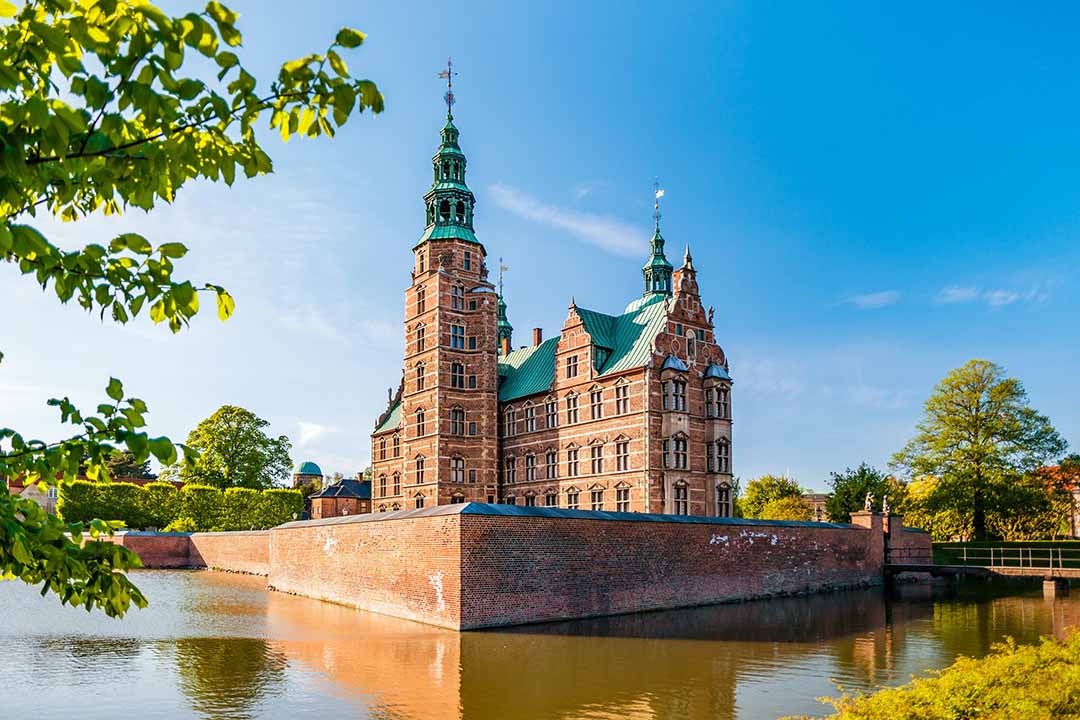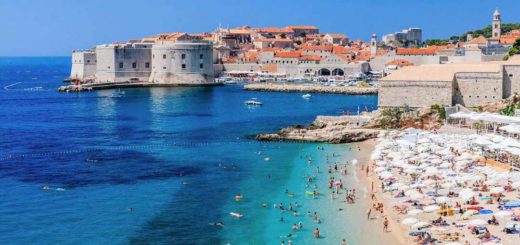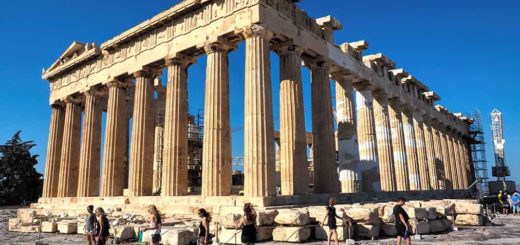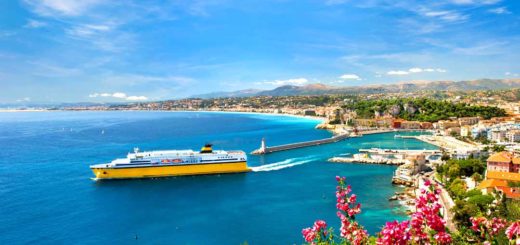Copenhagen
Copenhagen, the capital of Denmark, is one of Europe’s oldest and most popular cities. Sitting on the coastal islands of Zealand and Amager, it’s linked to Malmo in Sweden by the Öresund Bridge. With some of the best restaurants in Scandinavia, and packed with cafes and shops, the Danes are amongst the world’s happiest people, and it’s easy to see why in the city. When you visit Copenhagen, these are some of the best attractions you can visit.
Pick up your Copenhagen Card for free entrance to 83 attractions and free public transportation in the Copenhagen Region.
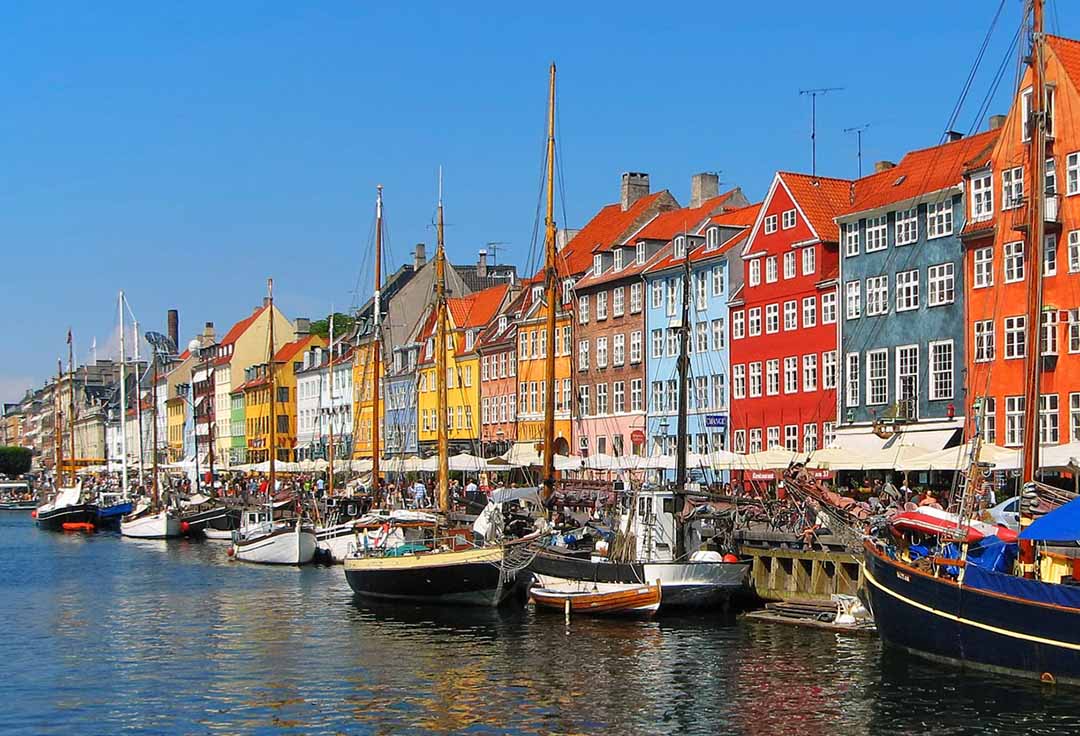
Tivoli Gardens
Tivoli is an amusement park and pleasure garden in central Copenhagen and is the third oldest amusement park in the world after opening in August 1843. Hans Christian Anderson and Walt Disney both visited Tivoli Gardens which is a must-visit for everyone young and old.
Lots of people picnic in the garden, but there’s a wide choice of restaurants to choose from, including Danish cuisine, a French bistro, and the new seafood bistro, Figaro.
Perhaps before you’ve eaten, you can try out the most popular ride, the wooden roller coaster from 1914! If you don’t fancy being thrown around at 100km/h, you can enjoy the aquarium, a museum, or music events and festivals throughout the year.
Located right next to the Central Station and within walking distance of City Hall, the gardens are lush and the scenery is beautiful. There’s something here for everyone!
Nyhavn
Located on the 17th-century waterfront, this canal and entertainment district stretches from Kongens Nytorv to the Royal Playhouse harbourfront.
Nyhavn was founded in the 1600s as a passage from the ocean to the inner city and to control the trade that Copenhagen was experiencing at this time.
The canalside features a variety of restaurants, cafes, and bars, with dancing and music during the day and evenings.
Today, Nyhavn is a tourist magnet of brightly coloured townhouses and boats, and an ideal place to sit and watch the world go by.
Amalienborg Palace
Four identical buildings set on an octagonal courtyard make this palace immediately identifiable as the Danish royal family’s winter home.
Originally intended to house four noble families, the royals bought them all in 1794 when another palace burned down.
Palace guards still stand watch, and visitors can observe the vestigial daily traditions of a parade followed by the changing of the guard.
The statue of Frederick V on horseback stands near the centre of the courtyard, and lush gardens separate the palace from the water.
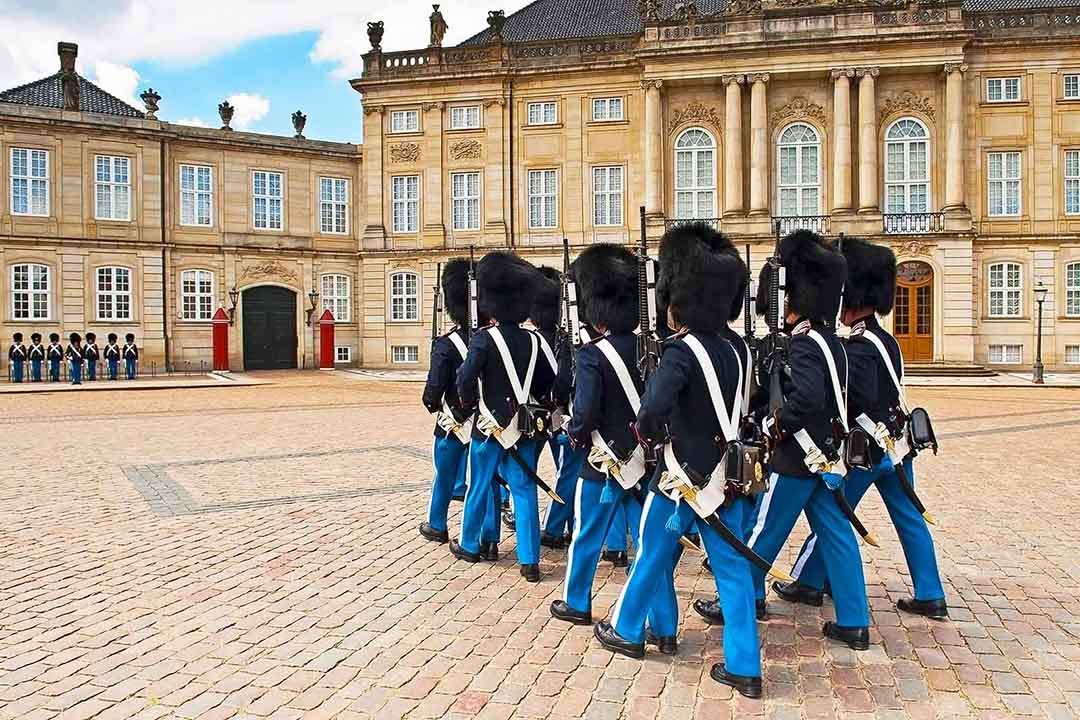
Den Lille Havfrue Statue
This statue represents what is arguably one of Denmark’s most famous exports, The Little Mermaid. Hans Christian Andersen, Denmark’s favourite son, penned the tale long before Disney turned it into the world famous movie known by millions. The model for the face of the statue was actually the woman performing the role in a Copenhagen ballet production of the story. Situated near the water, it is a compelling recreation of one of the most well-loved stories in modern literature.
The Ny Carlsberg Glyptotek
This museum features sculptures from Egypt, Greece and Rome, as well as pieces by Rodin. In addition to sculptures, a collection of paintings from the French Impressionist and Danish Golden Age eras is on display. The collection began as a private possession belonging to Carl Jacobsen, the son of the founder of Carlsberg Breweries. Over time the collection grew until Jacobsen dedicated it to the city of Copenhagen in 1888.
Strøget or “Stroget”, the Pedestrian Shopping Area
This strictly pedestrian set of shopping avenues is one of the longest in Europe. Cars were banned from the area in 1962 when too much traffic clogged up the narrow streets of the central city, and the change has allowed this part of town to flourish. With renewed importance placed on foot traffic, more shops, bars and restaurants have sprung up, as well as street performers and musicians.
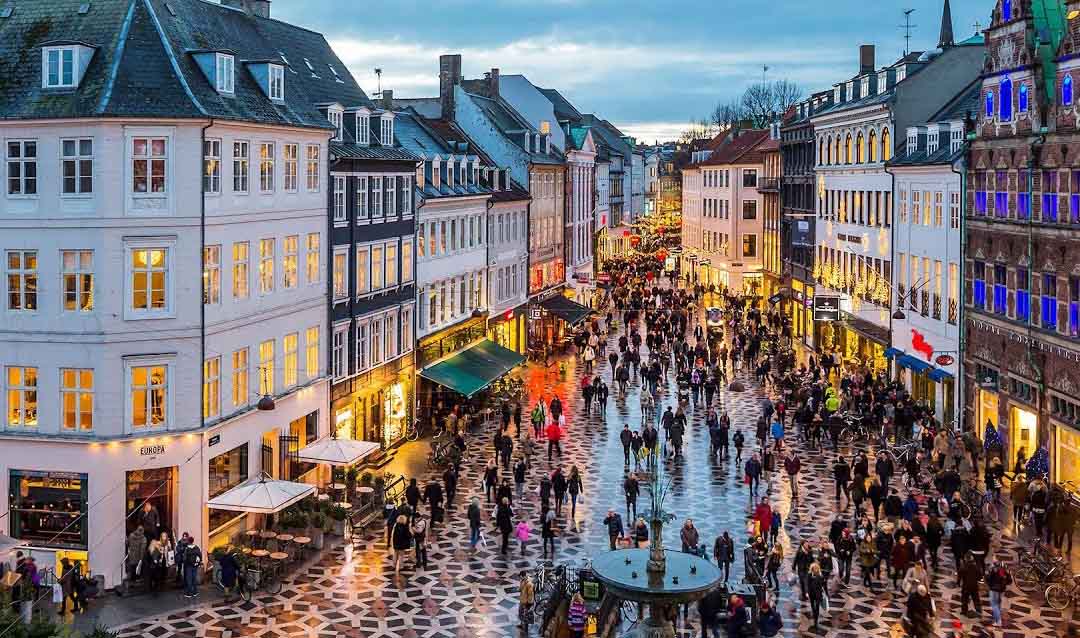
Dyrehavsbakken
Opened in 1583, this is far and away from the world’s oldest amusement park. It began organically when people flocked to the natural spring for its alleged healing properties, and street vendors began to set up shop around them. Periodically closed during the rule of certain monarchs, it was reopened to the public in 1756 under Frederick V, and hasn’t closed since. Today there is a multitude of modern rides, like roller coasters, bumper cars, laser tag and water slides.
Freetown Christiania
In the Christianhavn area of town, you’ll find this curious neighbourhood. Once the site of a military base, it was broken into by squatters after the military vacated the premises, and has since become an autonomous region within the city. Here, people live communally, sharing ownership of cars and following a set of community rules. It is a uniquely Danish institution, a testament to the forwardthinking individuals who live here.
Statens Museum for Kunst
The root of this museum goes back to the Danish monarch Frederick V. He wanted to turn his personal collection into a museum fit for any worldclass European city, and set about procuring pieces from all over the continent. The oldest piece dates back as far as the 12th century, but the museum features modern art as well. Danish paintings are wellrepresented, and the Royal Cast Collection is another highlight. Made up of plaster casts recovered from sites all over the world, artefacts from Egypt, Rome and Greece are all on display.
Rosenborg Castle
Rosenborg Castle’s greenroofed central spire pierces the sky above it like a mountain peak. Its primary function was as a summer house for the monarchy. It is in this castle that visitors can see the Crown Jewels, the Danish Crown Regalia, and the coronation chair. In the Long Hall, marvel at the enormous stucco representation of the Danish coat of arms built into the ceiling. Artefacts on display.
